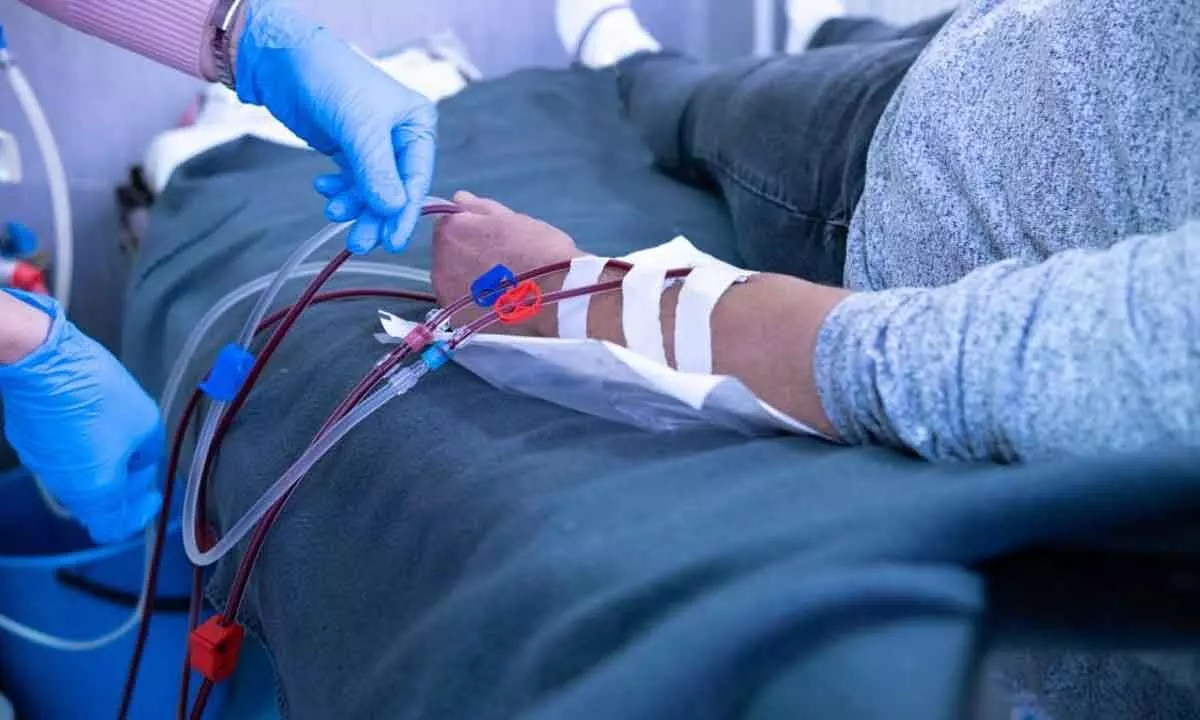Need to accord priority to data collection on dialysis outcomes
image for illustrative purpose

Today India has one of the highest numbers of long-term dialysis patients, which stood at a staggering 175,000 individuals in 2018. The numbers have been rising ever since. Amongst all procedures covered under the Ayushman Bharat scheme, the government spends the maximum amount on dialysis procedures. However, there has been limited data on the clinical outcomes of dialysis patients in India. Previous studies were either too small, single-center, or over 10 years old. Till recently, there was no national benchmark for survival of hemodialysis patients, and no study had examined survival differences between dialysis centers. Hemodialysis is a vital medical procedure used to treat individuals with kidney failure. When the kidneys are no longer able to filter waste and excess fluid from your blood effectively, hemodialysis steps in to perform this crucial function.
Quite ironically, mortality is 32 per cent higher in rural centers compared to urban centers, even after considering differences in patient case-mix, lower mortality in people with higher education or a higher household income, lower mortality for patients who do not pay for their treatment out of their pockets, compared to those who shelled down money, higher mortality in patients with diabetes and those whose vascular access is anything other than an arteriovenous fistula or graft. The National Dialysis Programme and subsidies by state governments have improved access to dialysis in the country, and millions of Indians can now receive this life-saving treatment. The Union and state governments should consider extending their reach and coverage in order to include support for the prevention of kidney disease and improved long-term management of major complications associated with dialysis, such as cardiovascular disease and mineral bone disease. There should also be steps towards pairing up of a dialysis registry with the national dialysis programme. At least that is what a recent study, the first such national benchmark study on the survival among haemodialysis patients, by the George Institute for Global Health, India, suggests.
The study seeks to measure the extent to which variation in survival between centres could be explained by centre-level factors. This has been an important learning exercise to think about the types of information that need to be collected in a national dialysis registry to ensure that an effective quality improvement system can be established. By establishing a national benchmark for survival rates and identifying key factors influencing survival, a research of this kind, paves the way for targeted interventions and improved care for dialysis patients across the country. Mind you that as India expands access to dialysis, continuous and collaborative quality improvement initiatives will play a vital role in ensuring that patients receive best possible outcome during care. The collection of standardized, prospective data on dialysis outcomes and other important characteristics will be central to this, to enhance accountability and identify regions for care improvement. These imply that that there is a need to streamline the current approach to make the Ayushman Bharat scheme more purposeful.

